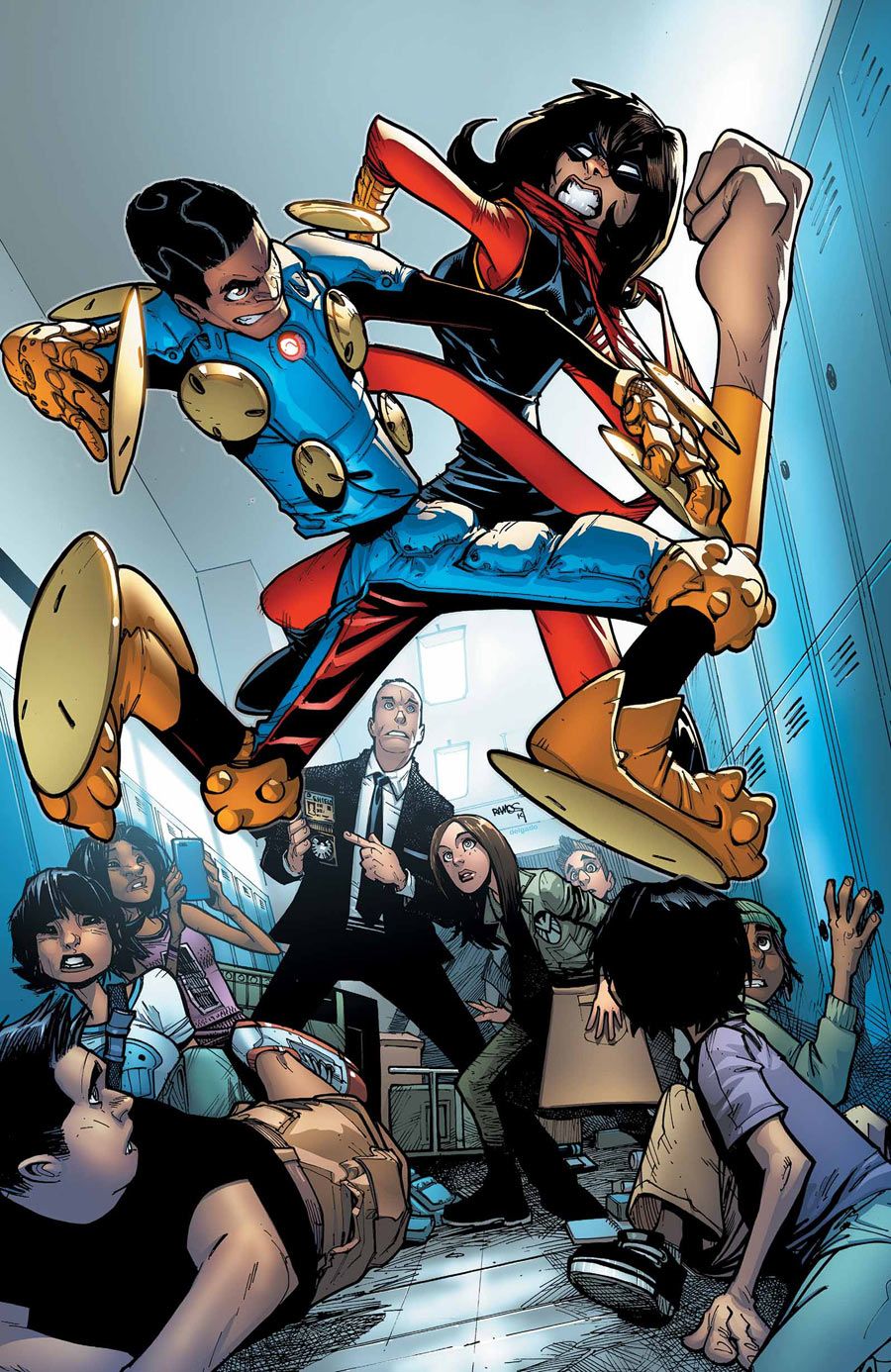Readers expecting "S.H.I.E.L.D." #2 to contain a "Marvel Team-Up" tale are going to be slightly disappointed that writer Mark Waid and artist Humberto Ramos bring in Ms. Marvel solo for this issue. In doing so, however, they give Ms. Marvel a chance to show off a bit and also give her plenty of time and space to interact with Coulson and Simmons both individually and together.
The charm of "Marvel Team-Up" is present as well as the luxury of introductions that series once afforded readers on a regular basis, despite the presence of the Animator, the only other super-powered character in this issue's tale. The plot is fairly simple, but Waid massages it in such a manner as to make it seem fresh and fun, and the addition of youthfully optimistic characters like Simmons and Ms. Marvel boost the fun quotient in this comic book. Despite the debates between Coulson and Khan regarding the nature and names of the equipment being used by the bad guys, Waid keeps the story refreshingly upbeat and very continuity-lite. Yes, the debates add winks and nods to the dialog and seed "S.H.I.E.L.D." #2 with plenty of moments to make Marvel fans smile, but Waid's focus is clearly on having fun in the grand, sprawling sandbox between the Marvel Universe proper and the Marvel Cinematic Universe. People familiar with Waid and his passion for comics will see the writer shine through in Coulson as much as Clark Gregg's persona in Waid's dialog.
In "S.H.I.E.L.D." #2, Ramos is reunited with Waid, a coupling that made "Impulse" one of the more fun comics on the stands in the mid-90s. As he did with Impulse, Ramos sneaks in a pictograph thought bubble for Khan, which is certain to make longtime comic readers happy while also clearly informing readers of the threat present. Ramos leaves the rest of the word balloons to Joe Caramagna, who has clearly checked in for some fun as well. At one point, Ms. Marvel is flatter than usual, and Caramagna reflects that in his word balloons. As she is out of her book, Caramagna conforms Khan to the rest of the Marvel Universe, giving her all capital letters rather than her signature mixed case used in "Ms. Marvel." Seemingly little choices like that add to the fun of "S.H.I.E.L.D." #2.
As for Ramos' work throughout the book, his Ms. Marvel is fun and rangy, a fitting character for his style, although it appears her powers are always in play and maybe even occasionally contagious given the exaggerated anatomy Ramos makes his own. With Victor Olazaba's inks and Edgar Delgado's bold superhero coloring, Ramos keeps the action lively and in motion throughout. Ramos' Coulson is uneven in some spots -- he's a brilliant caricature of Clark Gregg in one spot, he's Rick Dicker from "The Incredibles" in another -- but the caricature Ramos has crafted for Simmons is recognizable throughout and packed with the hesitant buoyancy Elizabeth Henstridge gives the character on television.
Considerably more light-hearted than the television show, "S.H.I.E.L.D." #2 gives readers a chance to meet Jemma Simmons in the field, gain a little background on her family and see her team up with Coulson and Ms. Marvel. A fun comic book that opens its arms to new readers, "S.H.I.E.L.D." #2 is a change-up visually from the first issue but not so much as to become problematic. This can and should serve as a welcome wagon to bridge the audiences of film, television and comic, and -- with Waid onboard -- should also continue to be an enjoyable comic book.

